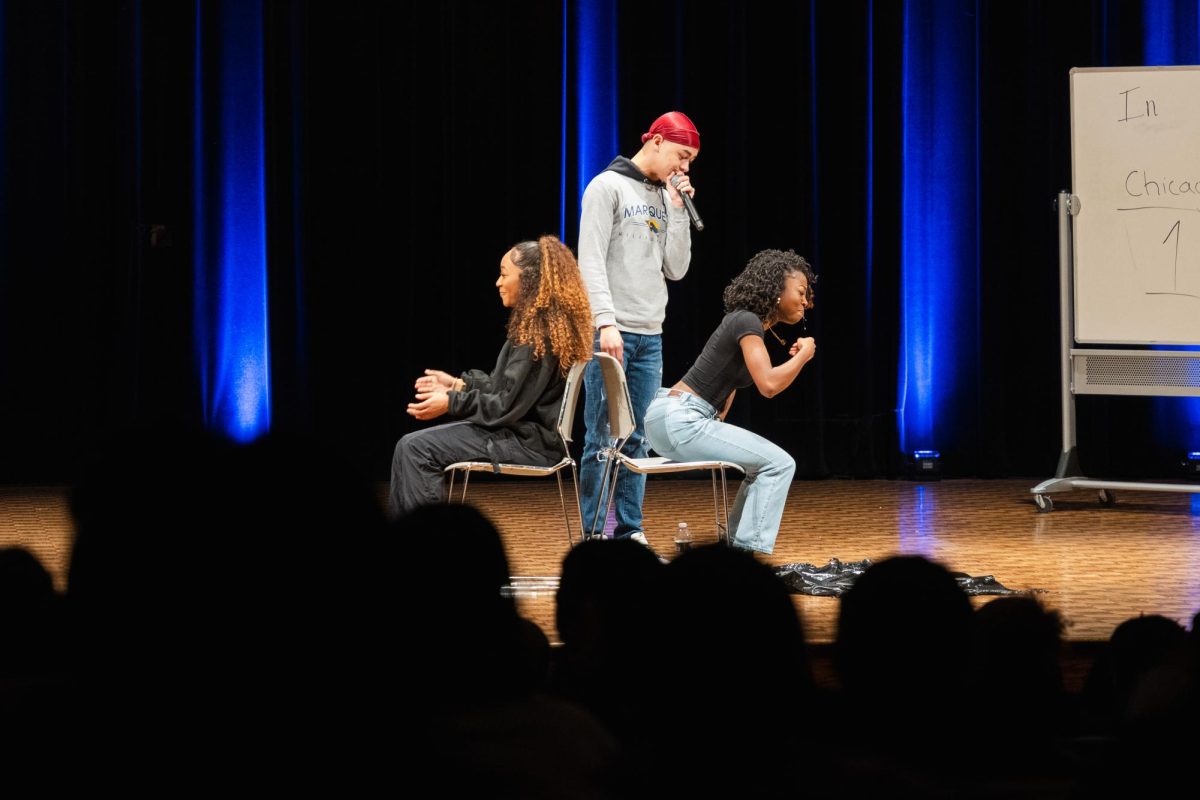Throughout the last week of Black History Month, various events were held throughout Marquette’s campus, with one being the Black Joy Exhibit.
The Black Joy Exhibit was on display on the second floor of the AMU from Feb. 26 until March 1. The exhibit consisted of a slideshow display, as well as two posters that explain more about the Black Joy Project.
Maiya Sabree, graduate assistant for cultural engagement within the Center for Engagement and Inclusion, said the Black Joy Exhibit is an experience of Black joy on and off Marquette’s campus within various programs.
“A lot of the slideshow photos are from programs that happened throughout the past year,” Sabree said. “We really wanted to highlight different things that happened, specifically within Black History Month, but acknowledging that different events have occurred.”
Alecia Conway, coordinator for cultural engagement in the Center for Engagement and Inclusion, shared that the Black Joy Project is not affiliated with Marquette University; however, the Black Joy Project was put on by the Center for Engagement and Inclusion.
“It was initially a book by Kleaver Cruz,” Conway said. “It is a book composed of photos, essays and other documents of Black Joy. From my understanding, Kleaver reached out to different people to actually create the Black Joy Project.”
On display at the exhibit was a quote from Cruz, “Black Joy is not… dismissing or creating an ‘alternate’ Black narrative that ignores the realities of our pain; Rather, it is about holding the pain and injustice… in tension with the joy we experience. It’s about using that joy as an entry into understanding the oppressive forces we navigate through as a means to imagine and create a world free of them.”
Conway said they decided to include this quote in their exhibit because it embodied what they defined as Black Joy.
“A lot of the times when folks think of Black Joy, they think that is the only type of Joy. But Black Joy encompasses all of our students, and essentially the Black experience,” Conway said. “It is a great project which is why we decided to utilize Kleaver and the Black Joy Project in our exhibit.”
This is the first year the Black Joy Exhibit occurred, and Conway said they created this because they really wanted to end the month with joy.
“A lot of times when we think of Black History Month, we only think of slavery, the Civil War, the Black Power Movement and a lot of struggles within the United States,” Conway said. “Our intention was really creating something that displayed the joy of the now and the joy of what we’ve done throughout the year and beyond.”
To plan the exhibit, Sabree said she and Conway started by thinking about how they could display Black Love Photo Booth photos — an event held during Black History Month. She said they came to the conclusion that they had a lot of photos from the entire month that would be worthy of being on display and they wanted to showcase them.
In addition to the slideshow and posters, there was a QR code for donations to the Center for Engagement and Inclusion. Conway said the donations would go to future programming and supporting Black students.
“It is something we started doing this year as an opportunity for our office to — on-top of having funding from the university — get additional funding in case of emergency, or even if there are funds not allocated for an event,” Conway said.
Conway also added that a lot of the Black History Month events weren’t just hosted within the Center for Engagement and Inclusion.
“There was collaboration with many different departments and student organizations across campus,” Conway said. “So, when we think about Black History Month, it is also acknowledging that it isn’t just us doing the work, but letting people know there are other centers here to support Black Students.”
Sabree said she hopes for students of color and beyond who maybe don’t get out as much to know that there are other people here to connect with. She also added that she hopes it will open the door for other students to get involved.
Conway said the main hope for this exhibit was for people to see their joy.
“Joy is also a part of our narrative,” Conway said. “Bringing this into light and remembering that joy is a part of this rich history.”
This story was written by Sophie Goldstein. She can be reached at [email protected].







